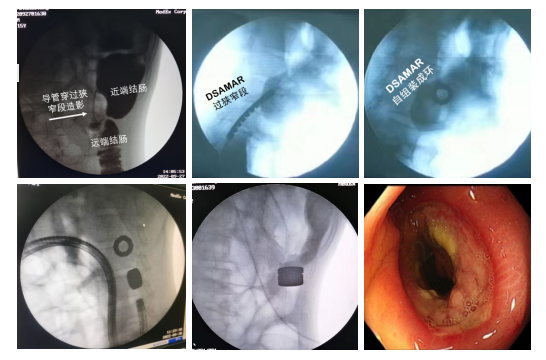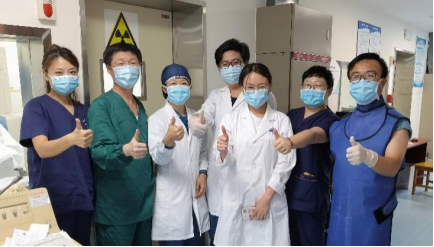Recently, the team from Department of Hepatobiliary Surgery applied magnet-assisted surgical technology to successfully treat a patient with severe descending colon stenosis caused by pancreatitis. According to literature review, similar case has not been reported at home and abroad.

The 15-year-old male patient was admitted to our hospital due to incomplete intestinal obstruction caused by recurrent episode of pancreatitis. He was diagnosed with descending colon stenosis complicated with colon obstruction. Colonoscopy showed that the stenosis site was less than 4mm in diameter. Conventional treatment consists of "left hemicolectomy + double-tube ileal exteriorization", which can cause significant trauma and require two-stage ostomy. Considering that the patient suffered from autism, experts were determined to apply magnet-assisted surgical technology to realize minimally invasive recanalization of colon stenosis guided by endoscopy. Professor Lyu Yi, a pioneer in the field of magnet-assisted surgical technology worldwide, immediately set up a magnetic surgery MDT team composed of Department of Hepatobiliary Surgery, Department of Gastroenterology and Department of Anesthesiology to discuss the surgical plan. However, this patient had only one surgical approach (transanal approach), different from previous patients with intestinal stenosis and even occlusion who were successfully treated with magnet-assisted surgery.

When everyone was seeking for solutions, Associate Research Professor Yan Xiaopeng presented the deformable self-assembling magnetic anastomosis ring (DSAMAR). It is a novel type of magnetic anastomosis ring, which can "shrink and deform" at a proportion of 1:15, suggesting that DSAMAR might pass through the 4mm colon stenosis after "shrinking", and then self-assemble into a ring to establish a large anastomosis diameter. Yan Xiaopeng led doctoral student Zhang Miaomiao from Department of Hepatobiliary Surgery to deliver simulated demonstration of DSAMAR deformation and self-assemblyin vitrofor nearly a hundred times and identify five necessary conditions for successful DSAMAR self-assembly, ensuring the success of surgery in this patient.
After fully informing his family members with the procedures and risks and obtaining the approval of major surgery from the hospital, the magnetic surgery MDT team successfully performed endoscope-guided magnetic recanalization of colon stenosis. At postoperative 7 d, the magnetic ring was discharged through anus. Colonoscopy at postoperative 9 d showed that the anastomotic diameter was increased to approximately 2cm, and conventional colonoscopy could be performed.At present, the patient can normally eat and drink, and defecation and flatus functions are restored.